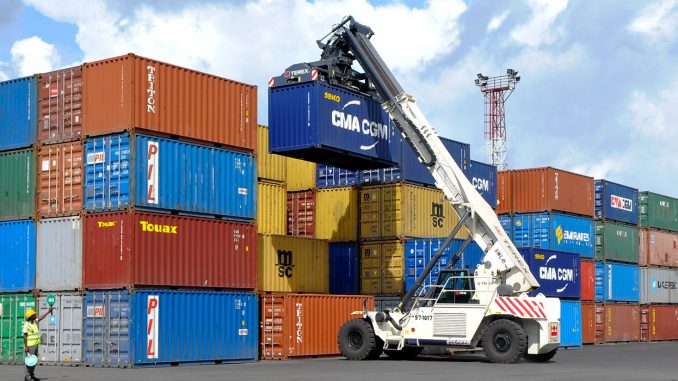
By Biswajit Dhar
India should ask for a reasonable phase-in period for tariff elimination before the proposed RCEP deal kicks in — this could be used to lend a competitive edge to the real sectors
The Regional Comprehensive Economic Partnership (RCEP), the 16-member mega-regional trading arrangement that is being negotiated for the past six years, seems to be ready for the end-game by close of the year. This was the message that was conveyed at the end of the meeting of the ministers from the RCEP Participating Countries (RPCs) held in Singapore last week.
The ministerial statement informed that the ministers had adopted a “Package of Year-End Deliverables”, which was developed by the Trade Negotiating Committee. The ministers tasked the negotiators “to expeditiously bring negotiations to a mutually beneficial and fair conclusion” and “to exert utmost efforts to achieve each of the targets in the Package”, so as the “achieve a comprehensive, high-quality and mutually beneficial economic partnership agreement”. Other than the sense of optimism that the deal would be done before the end of 2018, the ministers gave little away in terms of the substance of the proposed deal.
The negotiating processes of free trade agreements (FTAs) have been high on rhetoric about their likely beneficial outcomes and the participating countries have always stood by the informal commitment they make to each other not to allow public scrutiny of the work-in-progress. The negotiating process of the RCEP has been no different, and even though there are countries with vastly differing expectations from the agreement, there is no way in which there can be independent assessments in individual countries as to whether the likely outcome(s) match their expectations.
Take for instance the case of India, a country that always appeared to be a rather reluctant participant at the negotiating table. Thus, while the main protagonists of the proposed agreement, which include most of the RPCs, have pitched for comprehensive liberalisation of goods trade, India has been reluctant to go that far. In 2015, while putting forth its initial offers on tariff liberalisation, India’s offer to China was elimination of tariffs on 42.5 percent of its traded products. For all other countries, India was willing to go up to 80 percent.
India’s tariff offers were borne out of its experiences of implementing the FTAs with ASEAN, Japan and Korea. In each of these agreements, India had seen a ballooning of its trade deficits, caused by a steep rise in imports and lack of export penetration in the markets of FTA partners. India’s trade with ASEAN and Korea has seen a near doubling of the deficit since 2009-10, when these agreements were being finalised, while with Japan, the deficit had grown at a lesser pace. In fact, India’s trade deficit with the RPCs in 2017-18 was well over USD 104 billion, as against the overall deficit of USD 162 billion.
That India was clearly wary of China was eloquently expressed in the initial offers to China. Despite not enjoying preferential market access like the other major economies, China’s presence in India’s market had seen tremendous expansion. It exports to India had increased from about USD 31 billion in 2009-10 to over USD 76 billion in the previous financial year, while its imports from India increased from USD 11 billion to USD 13 billion.
The rapidly growing imports from China have not only stymied India’s manufacturing sector, they are now threatening some of our critical sectors such as textiles. According to the Confederation of Indian Textile Industry (CITI), India’s trade with China in textiles and clothing has gone from a surplus in 2013-14 to a deficit of USD 1.5 billion — these are worrying signs for these employment-intensive sectors.
If existing levels of trade openness vis-à-vis the RPCs have pushed India’s manufacturing sector into an existential crisis, can the Indian economy bear the brunt of further liberalisation? The answer seems to be an unequivocal no, since indications are that many of the RPCs would like see tariffs eliminated in no less 90 percent of the products.
At this level of tariff-elimination, small producers in agriculture and dairying, would be left in a highly unequal competition with the corporate interests from several RPCs. In the manufacturing sector the RCEP tariff-cut could adversely affect the automobile industry, which has been able to survive in an adverse domestic environment with the help of tariff protection.
Where did India see the gains that kept it engaged with the RPCs? The answer is, of course, services. From the multilateral trade negotiations to now, in the FTAs, India has been looking for enhanced market access for its service providers, especially the skilled and the semi-skilled, or the “Mode 4”. But the RPCs have been lukewarm to India’s proposal of dealing with tariff elimination in the goods sector and services sector liberalisation on parallel tracks, which could have given India some room to offset the adverse consequences of tariff elimination.
Clearly, India needs to work on its long-neglected vulnerabilities in agriculture and manufacturing, if it is to secure some gains from the proposed RCEP. This would require a reasonable phase-in period for tariff elimination, which could be used to lend competitive edge to the real sectors.
The challenge would be to negotiate effectively with countries, such as China, which are looking at the market opening via the RCEP to make good the losses it is suffering in the bruising tariff war with the United States.
(Biswajit Dhar is professor, Centre for Economic Studies and Planning, School of Social Sciences, Jawaharlal Nehru University, Delhi. Views expressed are personal.)
Source: Moneycontrol.com

Leave a Reply